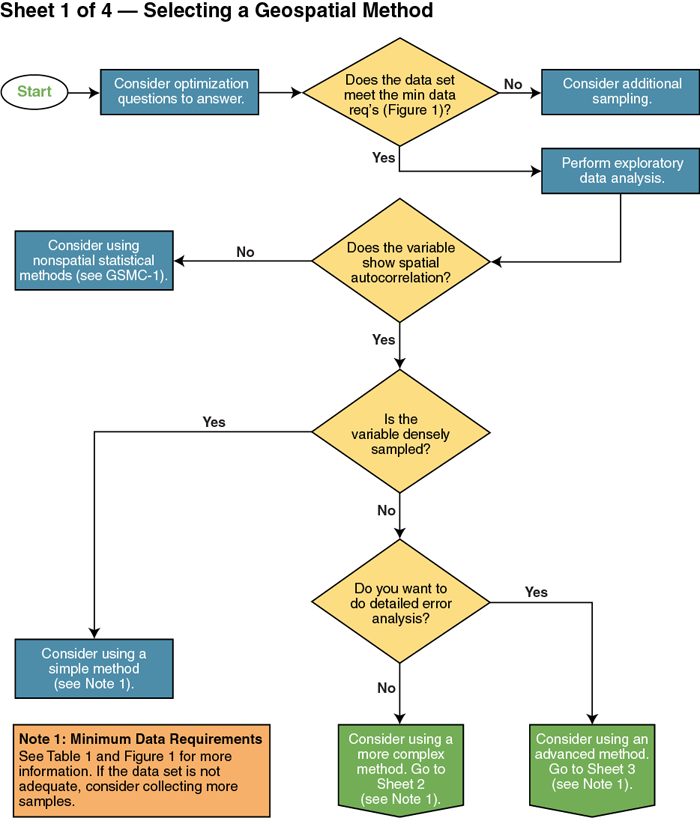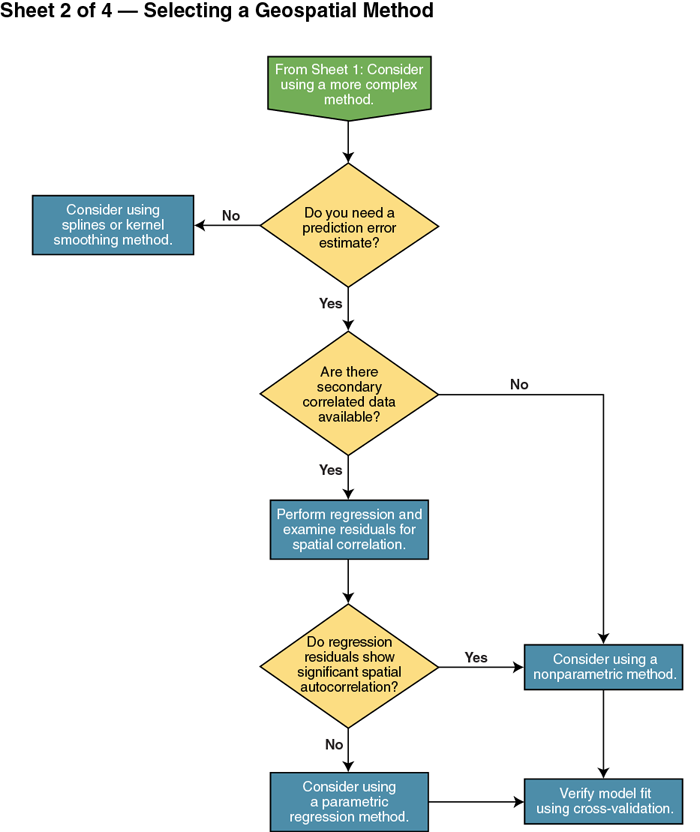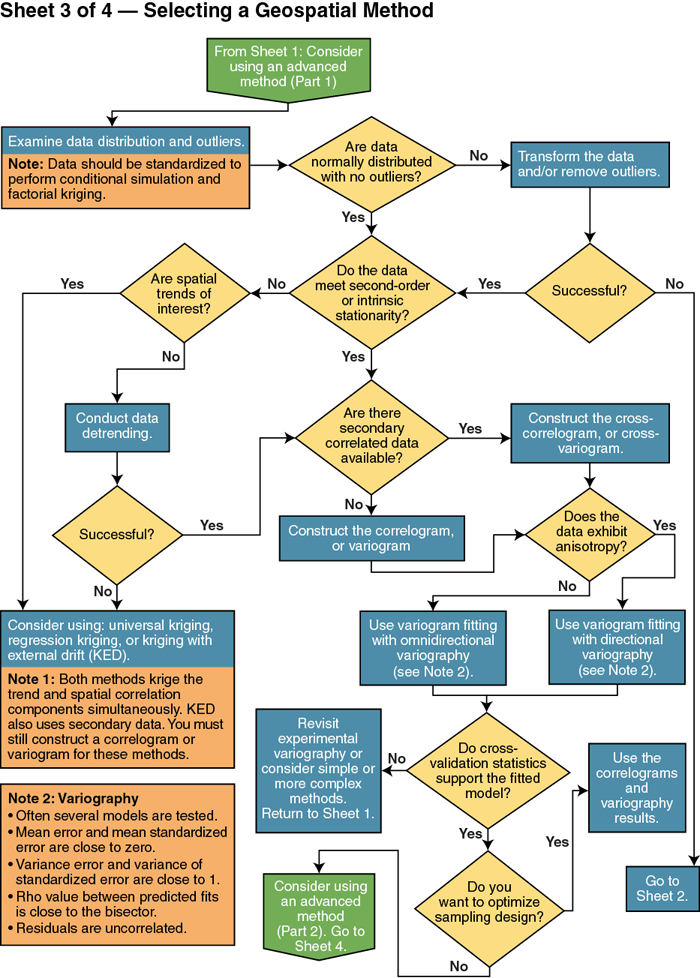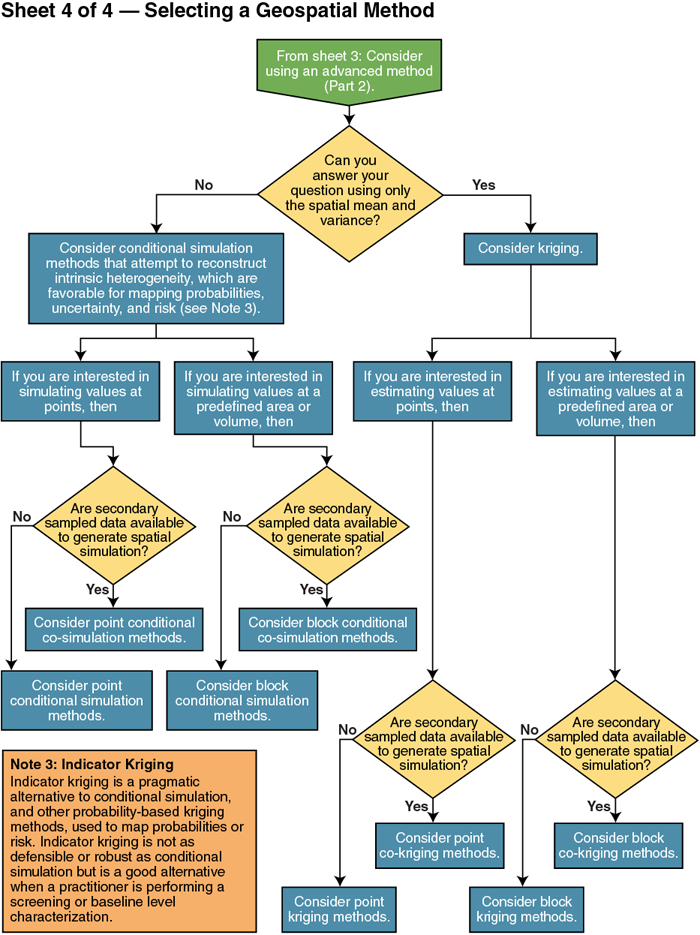Choosing Methods
This guidance provides information about selecting a geospatial method. The following flow charts provide more detailed information about choosing a geospatial method. Follow the steps below to choose the geospatial methods that may be appropriate to conduct the geospatial analysis:
Step 1. What questions are you trying to answer for each phase in the project life cycle? See Geospatial Methods for Optimization Questions in the Project Life Cycle Stages.
Step 2. Do you have the minimum data required in order to use geospatial methods? See Table 1 and Figure 1.
Step 3: Perform exploratory data analysis.
Step 4. Use the flow charts below to determine if simple, more complex, or advanced methods are suitable for the geospatial analysis.






